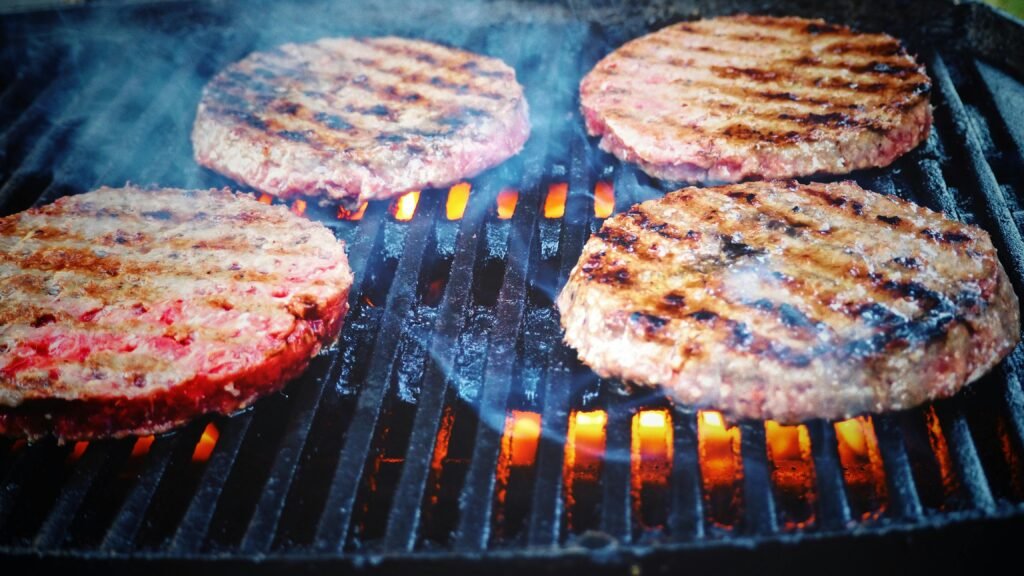Have you ever found yourself yearning for that perfect plate of smoked ribs, the kind where the meat practically melts in your mouth and each bite is a savory symphony of smokey goodness? Truth be told, we have. Few things in the culinary world bring people together quite like a rack of smoked ribs, tender and juicy, with the right amount of bark and the perfect balance of flavors. Today, we’re going to talk about how you can nail this smoked delight and become the pitmaster of your backyard.

This image is property of images.pexels.com.
The Magic of Smoking Ribs
There’s something almost magical about transforming a slab of raw meat into a culinary masterpiece using the age-old technique of smoking. The process, though time-consuming, infuses the ribs with an unparalleled depth of flavor. Smoking relies on the slow and steady application of heat and wood smoke to cook the meat slowly, imparting it with that quintessential ‘smokiness’ we all crave. At first glance, this might seem like an intimidating endeavor, but when broken down, it’s a thoroughly enjoyable experience that anyone can master with a little patience and attention to detail.
Why Smoking?
Before diving into the actual mechanics of smoking ribs, it’s essential to contemplate why we lean towards smoking instead of, say, grilling. When you smoke ribs, the collagen in the meat slowly breaks down over time, which results in tender, juicy ribs. Additionally, smoking imbues the ribs with an incomparable flavor that’s hard to achieve with other cooking methods. It’s a process that pays dividends in taste, texture, and aroma, which leaves everyone vying for seconds.
Picking the Right Ribs
When we’re preparing to smoke some ribs, the choice of ribs is fundamental. There are primarily two types of ribs available: baby back ribs and spare ribs.
Baby Back Ribs
More often than not, when we talk about smoked ribs, we’re picturing baby back ribs. These are smaller, more tender ribs that cook relatively quickly compared to their larger counterparts. These ribs come from the upper part of the pig’s ribcage and are known for their sweet, juicy, and tender meat.
Spare Ribs
Spare ribs, on the other hand, are meatier and come from the bottom part of the ribcage. They have more fat, which means more flavor, and they’re often the preferred choice if you’re looking to make St. Louis-style ribs. Their large size means longer cooking times, but the end result is worth every extra minute of wait.
Choosing the Best Rack
When selecting ribs, we look for racks that have an even distribution of meat and a bit of fat, which ensures that our final dish is juicy and flavorful. We avoid ribs with an excessive amount of surface fat, sticking to marbled racks instead.
Essential Equipment
Before getting started, let’s talk equipment. To smoke ribs effectively, having the right tools makes all the difference.
Smoker
First and foremost, we need a reliable smoker. Whether it’s a traditional wood smoker, an electric smoker, or a pellet smoker, the right equipment can simplify the process. Take into account the heat control features as well as the smoker’s capacity when making your choice.
Thermometer
A good quality meat thermometer takes the guesswork out of smoking. For smoking ribs, maintaining a stable temperature ensures consistency in texture and flavor. We opt for a digital probe thermometer that can monitor the internal temperature of the smoker as well as the meat.
Wood Chips
The wood we use is paramount to the success of our ribs. Popular choices include hickory, apple, cherry, and oak. Each wood type imparts its unique aroma and flavor. We recommend experimenting with different types to find the blend that best suits our taste buds.
Prepping the Ribs
Removing the Membrane
Removing the membrane ensures that smoke flavors can penetrate the meat effectively. To do this, we locate the membrane on the bone side of the ribs and use a knife to lift a corner. Then, we can grip it with a paper towel for better traction and peel it off entirely. This step, though seeming trivial, plays a significant role in achieving that melt-in-your-mouth texture.
The Rub
No discussion on smoked ribs is complete without delving into the rub. A good rub balances sweetness, saltiness, and a bit of heat. Here’s what we usually go for:
| Ingredient | Quantity |
|---|---|
| Brown sugar | 1/4 cup |
| Paprika | 2 tablespoons |
| Salt | 1 tablespoon |
| Black pepper | 1 tablespoon |
| Garlic powder | 1 tablespoon |
| Onion powder | 1 tablespoon |
| Cayenne pepper | 1 teaspoon |
| Mustard powder | 1 teaspoon |
We combine these ingredients thoroughly and massage the mix into both sides of the ribs. The act of applying the rub is therapeutic in its own right, ensuring the flavors seep deep into the meat fibers.

This image is property of images.pexels.com.
Smoking the Ribs
Now that we’re ready with our perfectly prepped ribs, it’s time to begin the smoking process. We usually follow the “3-2-1” rule when smoking ribs, a tried and true method that balances flavor, tenderness, and juiciness.
The 3-2-1 Method
-
3 Hours Unwrapped: We start by placing our ribs, bone-side down, onto the smoker with the temperature set at 225°F. Here, they smoke for an initial three-hour period. During this time, the wood choice will flavor the meat, and the exterior begins forming that delicious bark.
-
2 Hours Wrapped: After three hours, we take our ribs off the smoker and wrap them in aluminum foil with a bit of apple juice, beer, or another liquid of choice. The steam created in the foil softens the meat, enhancing tenderness over the next two hours.
-
1 Hour Unwrapped: Finally, we unwrap the ribs and place them back on the smoker for one more hour. During this phase, we often apply a glaze or sauce in the last 15 minutes. It allows the sugars in the sauce to caramelize and form a sticky, tangy exterior.
Sauce or No Sauce?
This is the age-old debate among smoked rib aficionados – to sauce or not to sauce. Personally, we adore both ways. When we do choose to sauce, we opt for a homemade barbecue sauce that combines molasses, ketchup, vinegar, and a touch of cayenne. The trick when applying sauce is to baste the ribs during the last 15-30 minutes of the smoking process to avoid burning.
Let the Ribs Rest
Once our ribs finish smoking, patience is key. We let them rest for about 15-20 minutes before slicing. This resting period allows the juices to redistribute within the ribs, ensuring every bite is just as mouthwatering as the last.

This image is property of images.pexels.com.
Serving Suggestions
Now that the ribs are ready, what are some delicious sides to serve with them? Let’s consider a few of our favorites that perfectly complement the smoky flavor of the ribs.
Classic Coleslaw
The creamy, tangy crunch of coleslaw cuts through the richness of the ribs, providing a refreshing contrast that enhances the overall meal.
Cornbread
A warm slice of cornbread, maybe with a hint of honey, pairs beautifully with the savory notes of smoked ribs. Its crumbly texture makes it a delightful accompaniment.
Baked Beans
We love how a side of hearty baked beans, with their mix of sweet, smoky, and savory flavors, elevates the entire barbecue feast.
Grilled Vegetables
A medley of grilled veggies such as asparagus, bell peppers, and corn add color, nutrition, and fresh flavors to the table.
Mastering the Art of Patience
Smoking ribs is as much an exercise in patience as it is in culinary skill. We embrace the process from the moment we light up the smoker to when we slice through the tender ribs. Sharing this meal with friends and family is the cherry on top, as it’s as much about creating memories as it is about enjoying food.
We hope this guide provides you with the insights to not only successfully smoke a glorious rack of ribs but to enjoy every step along the way. After all, the journey from raw meat to an irresistible feast is one worth savoring.



